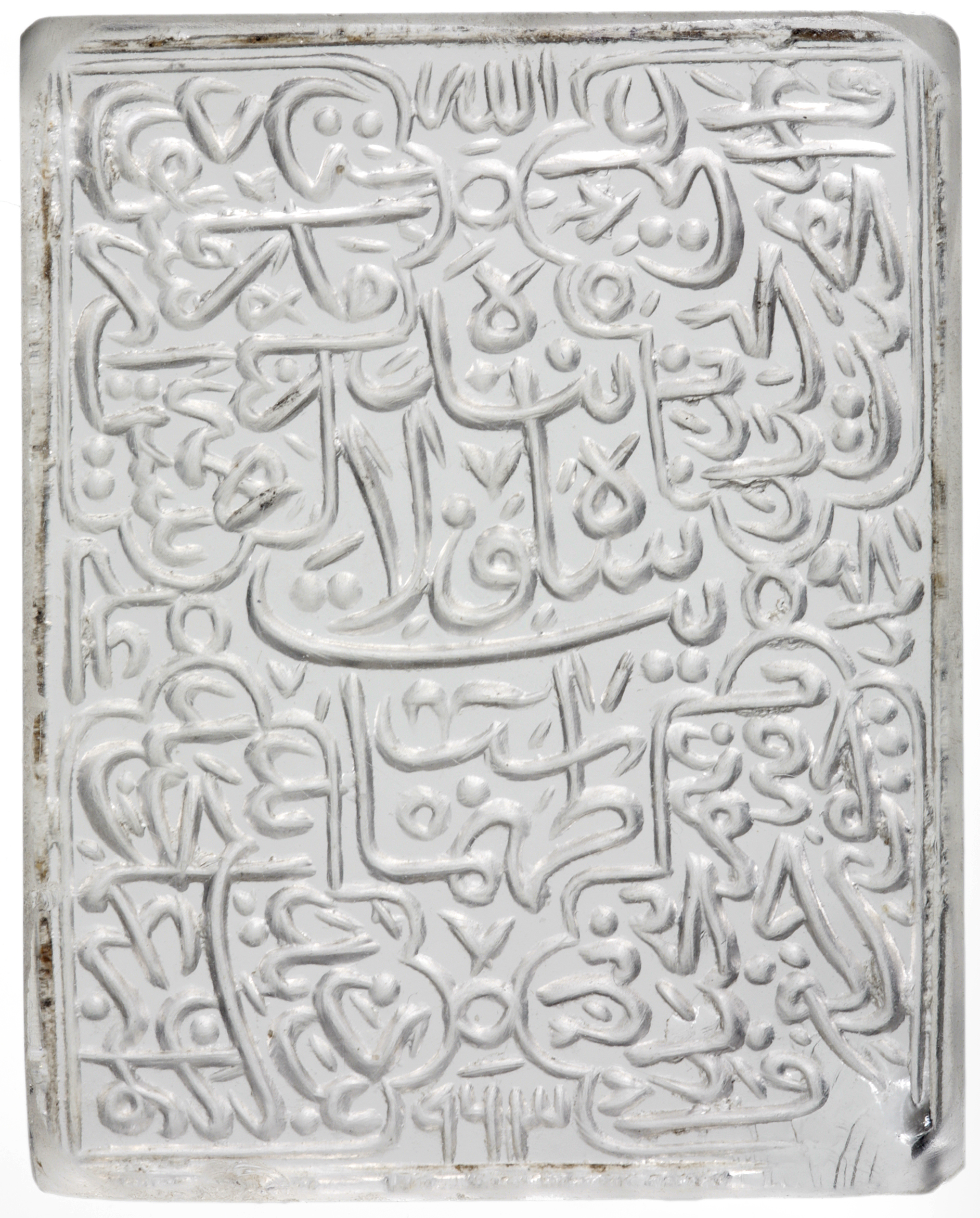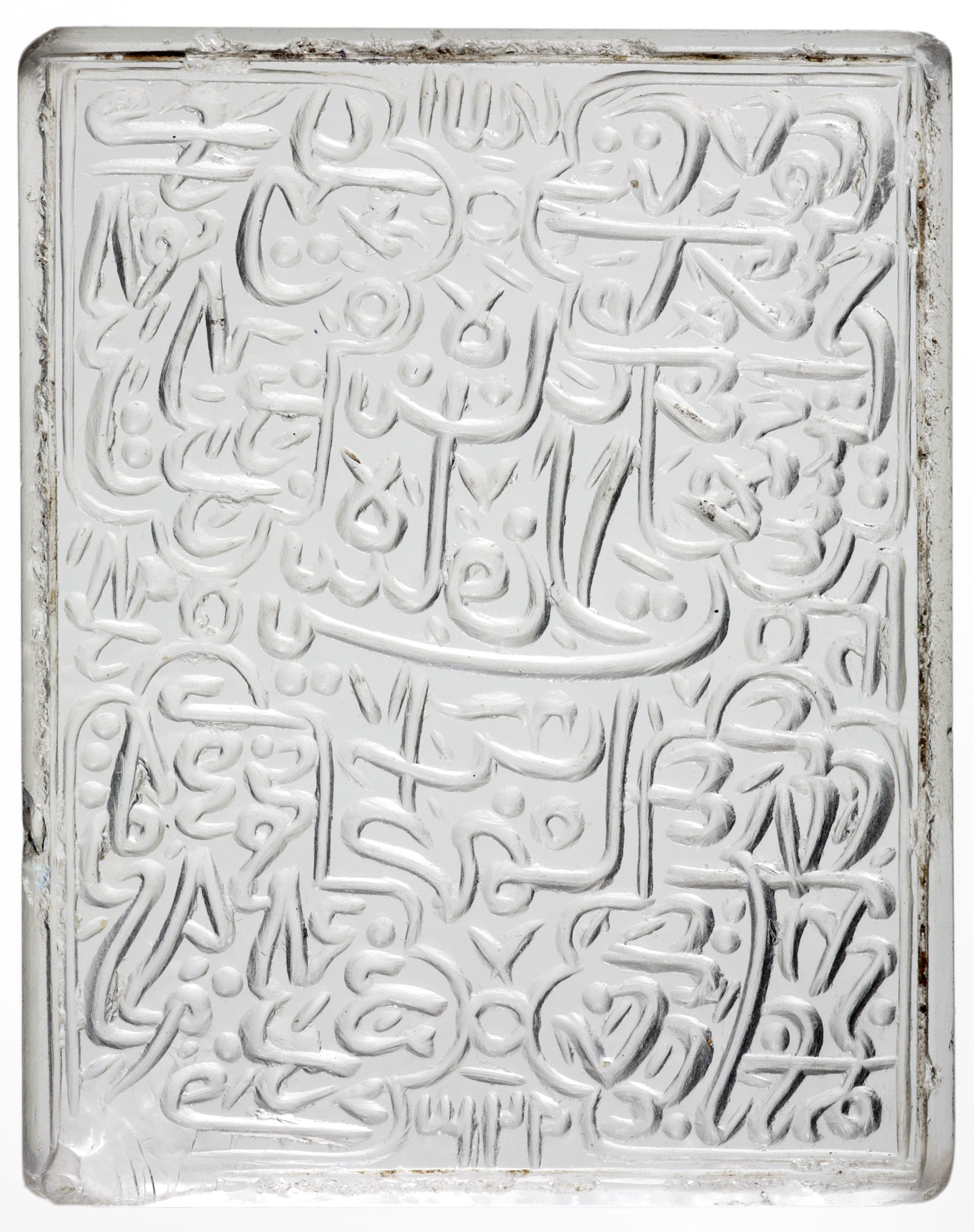 Print Page
Print Page
 Print Page
Print Page
Location: Qazvin, Iran
Materials: rock-crystal, wheel cut
Dimensions: 3.1 x 2.4cm
Accession Number: TLS 2714
Other Notes:
The rectangular seal is cut from flawless rock crystal. It is densely inscribed in a fine cursive script with the name of Shah Tahmasp, the second Safavid ruler of Iran (r 1524–1576), and four lines of Persian verse in the corners.
The name of Shah Tahmasp appears in the centre of the seal, ‘The slave of the King of Divine Amity, Tahmasp’. In Twelver Shi‘ism, the Persian term shah-i vilayat (‘King of Divine Amity’) is an attribute exclusive to ‘Ali, and reflects his close personal relationship with God.
Beginning from the bottom right-hand corner, the Persian verse reads,
‘When the list of my offences was rolled up
and taken to be weighed on the balance of human deeds,
my sins outstripped those of any other person,
but I was forgiven, for love of ‘Ali.’
In addition, the names of Allah, Muhammad and ‘Ali are written in the middle of the top, left- and right-hand sides, with the date 963 (1555–1556 AD) along the bottom.
Script:
inscribed in a cursive script
Bibliography:
J.M. Rogers, The Arts of Islam. Masterpieces from the Khalili Collection, London 2010, cat.425, pp.355.

